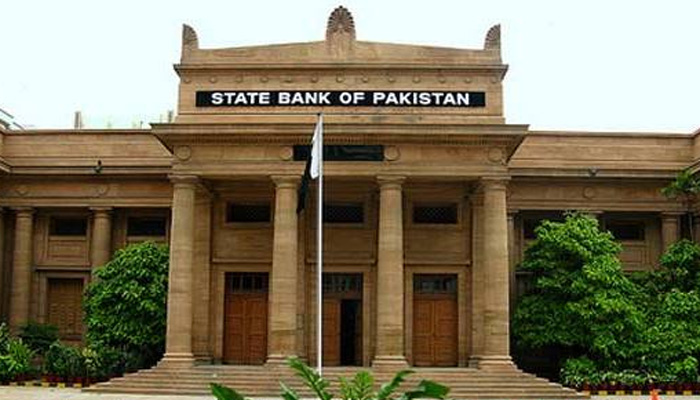Bad loans increase to Rs624 billion till June-end
KARACHI: Bad loans held by banks increased to Rs624 billion at the end of June 2018, the central bank data showed on Tuesday, with private sector lenders accounting for more than half of the total non-performing loans (NPL).
The NPLs of the banking industry stood at Rs615 billion in the same quarter of last year.
Twenty local banks in the private sector had total NPLs of Rs371 billion, compared with Rs372 billion a year earlier, according to the quarterly compendium published by the State Bank of Pakistan (SBP).
Private banks’ provisions were Rs342 billion as of end June 2018, compared with Rs333 billion in the second quarter of last year.
At the end of June this year, the NPLs of the public sector banks remained flat at Rs188 billion. The SBP data showed that NPLs to Gross Loans (infection) ratio fell to 7.9 percent as of end June from 9.6 percent in the corresponding period of 2017.
The asset quality of the banks has improved due to impressive growth in advances.
Total bank advances increased to Rs7.853 trillion from Rs.6.633 trillion a year ago.
Banks’ provisions against NPLs rose to Rs543 billion from Rs514 billion.
The agriculture sector had the highest infection ratio of 19.4 percent. NPLs in the agriculture sector were Rs62 billion, compared with Rs53 billion last year. The infection ratio in the corporate sector fell 7.9 percent at the end of June from 9.6 percent at the end of 2017 second quarter. NPLs in the corporate segment fell to Rs433 billion from Rs430 billion a year ago.
SMEs noted a decline in NPLs in April-June 2018. Its ratio fell to 17.8 percent from 20.5 percent.
NPLs of SMEs at the end of the second quarter were Rs75 billion.
The decline in the infection ratio of corporate sector was due to improved financials, which led to higher repayment capacity and lower probability of defaults.
The SBP in its financial stability review for 2017 published recently said the quality of assets of the banking sector mainly emerges from advances, as major chunk of investments was parked in credit risk-free government securities.
“Improvement in macroeconomic landscape with a positive growth outlook, lagged impact of monetary easing, better energy supply, and improved security conditions etc have all played a role in accelerating the flow of advances,” it said.
As such, efforts to recover the bad loans or settle through liquidating the pledged collaterals have largely been unfruitful. The recent initiatives at regulatory and legal fronts to resolve this issue have created optimism for the future.
“Though the recent improvement in NPL ratio is a welcome sign, the question is whether this fall is permanent or not. Generally, during easy financial conditions, both borrowers’ and lenders’ optimistic behaviour, leads to excessive risk taking,” the central bank’s report read.
“But as soon as the conditions tighten, borrowers repayment capacity shrinks and lenders become risk averse. This dual behavioural change leads to higher infection ratio. The long-term growth pattern of private sector advances gap and infection ratio reveals inverse relationship on few occasions,” it read further.
-
 Brooklyn Beckham's Wedding Dance With Mom Victoria Sparks Hilarious Memes
Brooklyn Beckham's Wedding Dance With Mom Victoria Sparks Hilarious Memes -
 King Charles' Latest Photos A Statement On His Health?
King Charles' Latest Photos A Statement On His Health? -
 Tom Cruise's Biggest Dream Crushed By The President?
Tom Cruise's Biggest Dream Crushed By The President? -
 King Charles, Queen Camilla Send Message To King Of Spain After Train Crash
King Charles, Queen Camilla Send Message To King Of Spain After Train Crash -
 'We Believe Brooklyn': David Beckham Trolled After Son's Statement
'We Believe Brooklyn': David Beckham Trolled After Son's Statement -
 Microsoft CEO Says AI Must Deliver Real World Impact To Survive
Microsoft CEO Says AI Must Deliver Real World Impact To Survive -
 Stranger Knocks, Then Opens Fire On Indiana Judge And Wife
Stranger Knocks, Then Opens Fire On Indiana Judge And Wife -
 Priscilla Presley's Derogatory Remarks On Late Daughter Lisa Marie Reignite Controversy
Priscilla Presley's Derogatory Remarks On Late Daughter Lisa Marie Reignite Controversy -
 Japan Unveils Anti-ship Missile With ‘barrel-roll’ Evasion To Outsmart Defenses
Japan Unveils Anti-ship Missile With ‘barrel-roll’ Evasion To Outsmart Defenses -
 How Brooklyn Beckham 'mentor' Prince Harry Inspiring Him To Speak Against Family?
How Brooklyn Beckham 'mentor' Prince Harry Inspiring Him To Speak Against Family? -
 Zac Efron, Kenny Ortega Revisit 'High School Musical' After 2 Decades
Zac Efron, Kenny Ortega Revisit 'High School Musical' After 2 Decades -
 Threads Overtakes X On Mobile Users: Here’s Why Everyone’s Switching
Threads Overtakes X On Mobile Users: Here’s Why Everyone’s Switching -
 Kanye West Eyes Performing First-ever Concert In India
Kanye West Eyes Performing First-ever Concert In India -
 Brooklyn Beckham's Claim About Nicola's Wedding Ordeal Gets Challenged
Brooklyn Beckham's Claim About Nicola's Wedding Ordeal Gets Challenged -
 AI Horror: 4 In 5 Young Workers Fear 'AI Could Replace Their Jobs', Says Report
AI Horror: 4 In 5 Young Workers Fear 'AI Could Replace Their Jobs', Says Report -
 Missouri Couple ‘locked Sons In Chicken Pen, Shot Them’ In Shocking Abuse Case
Missouri Couple ‘locked Sons In Chicken Pen, Shot Them’ In Shocking Abuse Case




